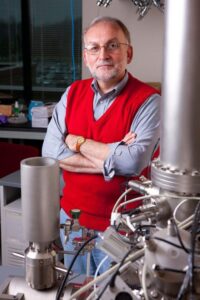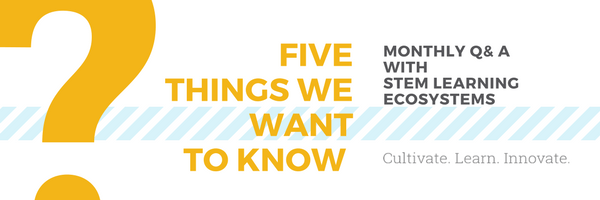An Interview with Dr. Joseph Gardella, ISEP
This month’s Connections Newsletter features an overview of the great work of the Interdisciplinary Science and Engineering Partnership (ISEP), which focuses on the critical middle school experiences of students in science and engineering as they transition to high school. ISEP was founded by Dr. Joseph Gardella. Learn more about him and this work:
What’s your background?
I grew up in Detroit (my parents were school teachers). I studied Chemistry and Philosophy at Oakland University in Rochester, MI, got my Ph.D. at University of Pittsburgh in chemistry and my postdoc at Utah. I’ve been a faculty member at University at Buffalo since 1982. I was an active parent leader in Buffalo Public Schools starting in 1995, and I focused on special education as both my children were students with disabilities. After receiving a Presidential Award for Excellence in Science, Mathematics and Engineering Mentoring in 2005, I got really focused on developing ISEP. Later, I wrote a white paper on Mentoring with several K-12 STEM experts who were awardees. Learn more about ISEP here.
ISEP started in 2005. How has it evolved over time?
We developed a strong interdisciplinary research-based professional development program for teachers in high-needs Buffalo Schools. Teacher pedagogical content knowledge has increased significantly. Fantastic community partnerships have developed with my university (UB), Buffalo State College, Buffalo Museum of Science, corporate partners and the district. We’re now working to expand and collaborate nationally because of the STEM Ecosystems Initiative.
What are you working on with ISEP for the future?
We’re working to expand to more schools in New York. Also, we’re developing some very different programs to focus on the transition to college and career. New higher ed partners SUNY Fredonia and Jamestown Community College are now helping to reach high needs students in rural districts.
How do you see this program helping solve the employment gap and meet demand for STEM jobs?
A big part is educating parents on what STEM jobs are and how to think about this for their kids. We’re also working with corporate partners to help define the workforce needs to parents and school leaders.
How is ISEP benefitting from its involvement in STEM Learning Ecosystems?
We are absolutely benefitting! We have the chance to network with educational excellence across many cities, regions, rural areas. The leadership and technical support is fantastic. The intellectual stimulation from this initiative alone is worth it, and the opportunities for other leaders in ISEP to work with others is great.

